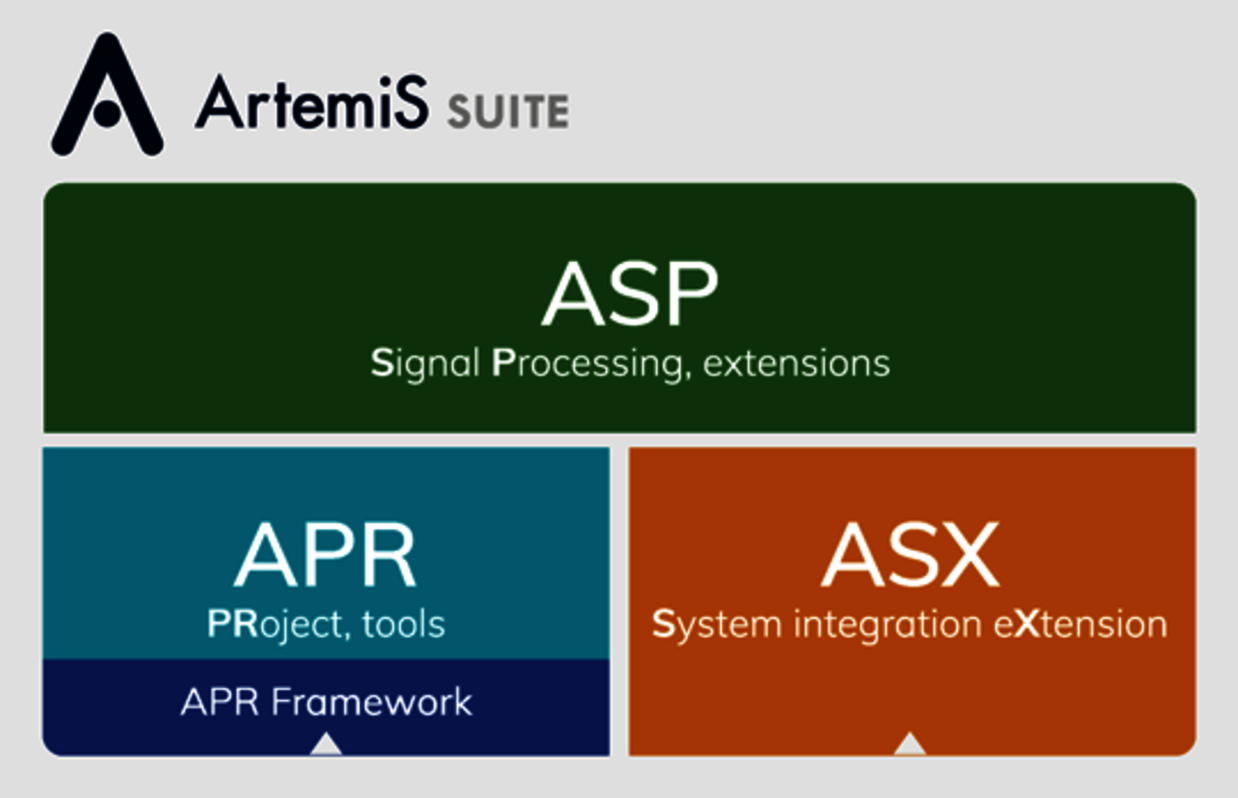Modules ArtemiS SUITE : Plateforme logicielle personnalisable pour l'analyse des bruits et vibrations
ArtemiS SUITE est une plateforme logicielle modulaire. La structure des modules est...
ArtemiS SUITE est une plateforme logicielle modulaire. La structure des modules est facile à comprendre car nous avons regroupé les modules par thème, évitant les chevauchements de contenu et les dépendances. La subdivision fine des modules permet des configurations logicielles que vous pouvez adapter précisément aux besoins découlant de divers scénarios d'application.
- Le noyau du logiciel est contenu dans le moduleAPR (APR 000) qui représente le fondement et la base de toutes les licences interactives ArtemiS SUITE. Ilest toujours requis.
- Les Projets et Outils (APR) se concentrent sur le travail interactif avec les projets et les outils, tels que Projet d’analyse, Rapport, Base de données, Enregistreur, Décodeur, et plus encore.
- Le Traitement du Signal & Extensions (ASP) fournit la plupart des analyses disponibles et des extensions pour des projets spécifiques (APR) sans chevauchement de fonctionnalités. Vous pouvez accéder aux extensions ASP via les outils interactifs ArtemiS SUITE, tels que Projet d’analyse ou Projet d’automatisation, ainsi que via des outils sans interface utilisateur, par exemple via ASX.
- Les interfaces d'intégration et d'extension du système (ASX) sont des interfaces de programmation permettant aux utilisateurs d'intégrer le logiciel HEAD acoustics dans leurs propres solutions système ou de l'étendre avec des solutions logicielles développées par eux-mêmes.
Les modules suivants sont disponibles :
ArtemiS SUITE est une plateforme logicielle modulaire. La structure des modules est facile à comprendre car nous avons regroupé les modules par thème, évitant les chevauchements de contenu et les dépendances. La subdivision fine des modules permet des configurations logicielles que vous...
ArtemiS SUITE est une plateforme logicielle modulaire. La structure des modules est facile à comprendre car nous avons regroupé les modules par thème, évitant les chevauchements de contenu et les dépendances. La subdivision fine des modules permet des configurations logicielles que vous pouvez adapter précisément aux besoins découlant de divers scénarios d'application.
- Le noyau du logiciel est contenu dans le moduleAPR (APR 000) qui représente le fondement et la base de toutes les licences interactives ArtemiS SUITE. Ilest toujours requis.
- Les Projets et Outils (APR) se concentrent sur le travail interactif avec les projets et les outils, tels que Projet d’analyse, Rapport, Base de données, Enregistreur, Décodeur, et plus encore.
- Le Traitement du Signal & Extensions (ASP) fournit la plupart des analyses disponibles et des extensions pour des projets spécifiques (APR) sans chevauchement de fonctionnalités. Vous pouvez accéder aux extensions ASP via les outils interactifs ArtemiS SUITE, tels que Projet d’analyse ou Projet d’automatisation, ainsi que via des outils sans interface utilisateur, par exemple via ASX.
- Les interfaces d'intégration et d'extension du système (ASX) sont des interfaces de programmation permettant aux utilisateurs d'intégrer le logiciel HEAD acoustics dans leurs propres solutions système ou de l'étendre avec des solutions logicielles développées par eux-mêmes.
Les modules suivants sont disponibles :

